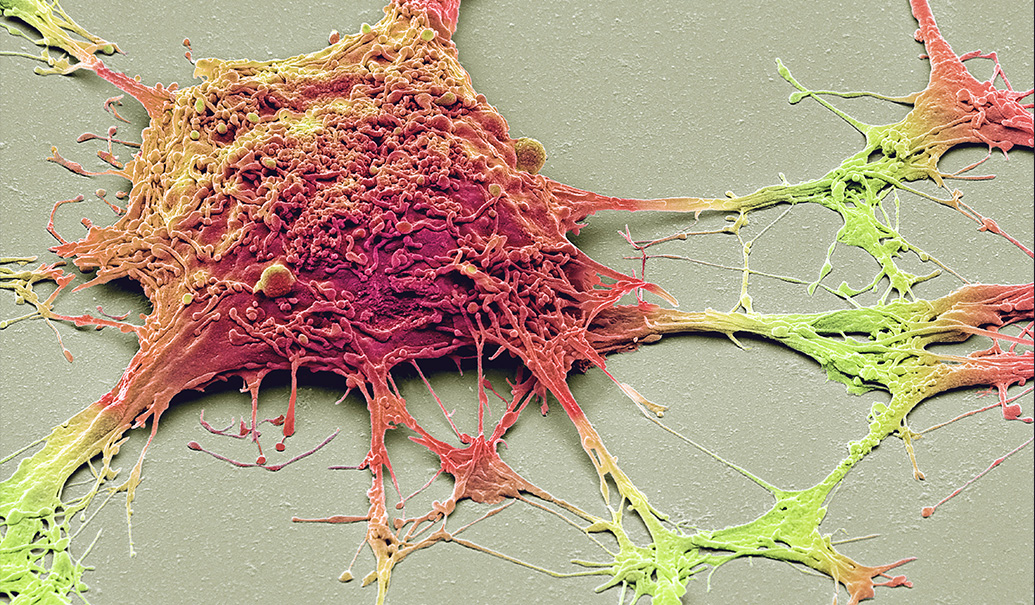Although antibody-drug conjugates (ADCs) have been on the market for more than a decade, there’s a growing buzz surrounding this therapeutic platform—with six of 12 FDA approvals in this category occurring since 2020, including deals in excess of $1 billion from Merck, AbbVie, Johnson & Johnson and GSK in late 2023 and early 2024. Whether a company is looking to add an ADC to its portfolio or already has an established position and wants to increase its chance of success, it’s critical to understand where to position ADCs and how best to develop them to benefit as many patients as possible.
Making the business case for antibody-drug conjugates
The excitement around ADCs can be attributed primarily to four factors:
Clinical improvement. Any discussion of the growing prominence of ADCs starts with their clinical potential, which in many cases represents a staggering improvement over standard of care across a wide range of cancers. In the phase 3 DESTINY-Breast03 clinical trial for HER2-positive metastatic breast cancer, for instance, the ADC ENHERTU demonstrated a 72% reduction in risk of tumor progression or death compared with standard of care. In the phase 3 EV-302 trial pairing Padcev with the immunotherapy Keytruda, the duo roughly doubled both median progression-free survival and median overall survival compared with standard of care for patients with locally advanced or metastatic urothelial cancer.
Commercial potential. As of January 2024, there were 12 FDA-approved ADCs covering 16 indications, including several types of breast cancer, non-small-cell lung cancer, bladder cancer, classic and non-Hodgkin lymphoma and more. Worldwide sales for these drugs were $7.5 billion in 2022, the most recent year for which data is available. Sales for this class (per Evaluate Pharma) are projected to grow to more than $30 billion by 2028 with a robust projected compound annual growth rate of 25%.
De-risked development. ADCs offer a vast and comparatively de-risked pipeline, as measured by probability of technical and regulatory success (PTRS)—especially compared with the overall oncology category (Figure 1). For ADC monotherapies in phase 3 trials (not pictured), the PTRS is even higher at 53%, compared with 41% for oncology overall. The comparatively high PTRS of ADCs helps explain both the frequency and size of deals we’ve seen in 2023 and 2024.
Platform potential. A platform approach to drug discovery and development, whereby drug manufacturers leverage a common platform to produce multiple new therapeutics with reduced need for asset-specific add-ons, has been shown to speed time to market and deliver substantial cost efficiencies. In fact, ZS analysis has found that platform companies, on average, add subsequent pipeline assets between three and eight months faster than non-platform companies—and at 40% lower R&D cost.
The modularity of ADCs makes for an ideal platform. Take, for example, Daiichi Sankyo’s DXd ADC platform, headlined by ENHERTU. It took the company just over five years to go from first-in-human trials for ENHERTU to first-in-human trials for its fifth ADC. For non-platform companies, the average apples-to-apples time is more than seven years.
Surveying today’s landscape for antibody-drug conjugates
For companies that have yet to add an ADC to their portfolios, or those with an ADC scanning the competitive landscape, it’s important to understand which tumor types and targets are well covered (or not) today. It’s also important to analyze what the data tells us about the relative merits of an all-comers strategy versus a biomarker-directed one and what the dealmaking landscape for ADCs looks like.
ADC pipelines
Unsurprisingly, today’s list of ADCs in development by tumor type largely mirrors what we see in the market with non-small-cell lung, breast, ovarian, gastric and esophageal cancers dominating development pipelines (Figure 2). This “follow the leader” pattern makes sense given that ADCs have a proven track record against targets expressed in these tumor types.
Just as interesting, however, are the commercially attractive tumor types with limited ADC footprints—and why this may be:
Chronic lymphocytic leukemia (CLL). Small molecule therapies such as Bruton’s tyrosine kinase inhibitors and BCL-2 inhibitors, plus chemotherapy regimens, are already delivering strong overall survival outcomes.
Melanoma. Checkpoint inhibitors (and small molecular inhibitors in cases driven by specific mutations) already fare well against this “immune hot” tumor type.
Prostate cancer. This “immune cold” tumor theoretically lends itself to an ADC approach, however, other modalities such as hormonal therapies, PARP inhibitors and targeted radiopharmaceuticals have a strong head start. Prostate-specific membrane antigen (PSMA) represents an attractive target, however, which explains Johnson & Johnson’s recent acquisition of Ambrx Biopharma and its leading ADC candidate, ARX517.
Looking now at targets by volume of trials and development phase (also Figure 2), we see more focus on de-risked targets associated with already approved ADCs. But in-development targets like EGFR, HER3 and CLDN18 are also popular, and B7H3 and c-MET fall just outside the top 10. Interestingly, some targets associated with approved ADCs—namely, CD19, CD33, CD22 and tissue factor—are seeing limited further development.
Reflecting on target and tumor type together, we can see approved and in-development ADCs across both solid tumors and hematological malignancies—with perhaps more emphasis on solid tumors. This underscores the versatility of ADC technology, which combines cytotoxic payloads effective against a range of malignancies with targeting antibodies able to reach specific tumor types.
A biomarker strategy or an all-comer one?
Companies just starting to build their strategies for ADCs may ask themselves if experience favors a biomarker-specified or an all-comers approach to clinical development. The answer: It depends. As seen in Figure 3, ADCs approved to date have more often taken an all-comers strategy. ADCs currently in phase 3 trials, by contrast, more often take a biomarker-specified approach.
There may be several reasons behind this. For tumor antigens expressed on all (or nearly all) a tumor’s cells, there’s little need for biomarker testing, because one can reasonably assume that an ADC with proven efficacy against a given antigen will be broadly effective against these tumors. And indeed, most approved ADCs are designed against targets with ubiquitous expression in at least one tumor type.
As the ADC class has grown, so has interest in addressing valid but less ubiquitously expressed biomarkers—which explains the inversion in approach seen between phase 3 assets and approved ones. After all, most cancer antigens exhibit some heterogeneity of expression that necessitates testing for biomarkers to identify patients with sufficient levels of expression.
Assessing the deal landscape for ADCs
Right now, emerging pharma is driving the vast majority of ADC development (79%); established pharma, perhaps unsurprisingly, is driving most of the ADC deal activity.
Turning now to frequency and types of deals (Figure 4), we see a strong plurality of deals that license individual ADC assets and platforms—with licensing of individual assets the more popular option. When companies make a full acquisition, on the other hand, it tends to be of a company with a full ADC platform. Clinical trial collaborations that see manufacturers supply drugs for combination therapy clinical trials are also quite common.
In terms of dealmaking by development phase, nearly half of all deals for ADCs to date have been for preclinical assets or technology. But around one in five has been for registrational or already-approved assets or technology.
A look at ADC dealmaking activity in 2023 reveals no sign of cooling interest, but it does yield interesting data points on the build-versus-buy question. AbbVie, for instance, opted not to pursue a splashy deal for three of Daiichi Sankyo’s ADC candidates (Merck pounced instead), saying it preferred its in-house technology. A month later, however, AbbVie turned around and acquired ImmunoGen and its on-market ovarian cancer ADC Elahere for $10 billion. Regeneron, meanwhile, with its deep expertise in antibodies, has eschewed dealmaking in favor of its own technology. Novartis, meanwhile, is on record saying it’s strategically shifting focus to emerging, non-ADC modalities where it believes it can attain long-term leadership, most notably in radioligand therapy.
Forging a path for the future of ADCs
Many companies believe ADCs may ultimately replace classical chemotherapy across a wide range of settings—including, notably, AstraZeneca. For this aspiration to become reality, we see four broad avenues.
1. Combinations. There are currently more than 50 phase 3 trials for combination therapies involving ADCs, the majority of which pair an ADC with an immune checkpoint inhibitor. For these combinations, we see an average PTRS of greater than 50%. Relative to monotherapy ADC trials, combination trials appear to be aimed primarily at moving ADCs into earlier lines of therapy or earlier stages of disease.
2. Sequencing. As more ADCs gain approval and enter the clinic, the question of optimal sequencing has grown in importance—especially in the post-progression setting. A key question influencing sequencing is, what drives resistance to specific ADCs within a given tumor type? There are two main factors:
• Target resistance. When a patient is progressing on an ADC but the antigen the drug is designed to target is still present, an ADC designed to recognize the same antigen—especially one engineered to recognize and bind to its target when expressed at lower levels—may be effective in sequence. If, on the other hand, the expression of the tumor antigen changes, then an ADC engineered to bind to a different target is more likely to be successful.
• Payload resistance. In cases where tumors develop resistance to an ADC’s cytotoxic payload, then an ADC designed for the same target but using a different mechanism of cell death may be effective.
Setting aside resistance, ADC-specific toxicities also may influence sequencing in cases where individual patients may be better or worse suited for managing a particular toxicity. We see this in multiple myeloma when sequencing proteasome inhibitors—taking into account, for example, potential impact of peripheral neuropathy, which would drive sequencing of Kyprolis ahead of Velcade.
3. Managing toxicity. Despite dramatic improvement in outcomes with many ADCs, toxicity remains a potential roadblock—both for individual patient outcomes and overall commercial prospects. This makes managing toxicity an important consideration for drug manufacturers and healthcare providers alike. Clinical evidence points to three best practices:
• Engagement of multidisciplinary teams, especially organ specialists, to monitor for and manage known organ-specific toxicities such as interstitial lung disease, cardiotoxicity and ocular toxicity
• Patient counseling and education to identify early signals of side effects as well as when, where, and how urgently to seek medical attention based on these signals
• Guidance not only on modifying or interrupting dosage but also on prescribing complementary medicines to manage side effects—for example, the way guidance on tocilizumab and corticosteroids to address cytokine release syndrome has evolved over time for autologous CAR-Ts
4. Pan-tumor potential. Developing pan-tumor ADCs is another way for drug manufacturers to expand their ADC platforms. Indeed, ENHERTU is currently under priority review for use in patients with unresectable or metastatic HER2+ tumors of any type and who have already received another treatment, bidding to become the first ADC approved with a pan-tumor indication. The pan-tumor potential of ENHERTU is partially predicated on broad expression of a good (read: de-risked) target. There are similar targets (EGFR, TROP2, Nectin-4) in phase 2 pan-tumor studies as well as targets with similar qualifications (B7H3, HER3) that don’t yet appear to have proof of concept or registrational pan-tumor studies.
ADCs represent one of the most transformative drug classes to emerge in years, both for patients suffering from a wide range of solid and hematological cancers as well as for drug manufacturers. Pairing an advanced understanding of relevant tumor types and targets with proven development strategies can help identify opportunities for companies to figure out “where to play.” Analyzing deals that have been made, meanwhile, can help companies figure out how to “get in the game.”
Sustainable market leadership, however, will go to those manufactures that figure out “how to win” through judicious use of ADCs in combination with other therapies, identifying opportunities for pan-tumor targets earlier than competitors, developing the right strategies to guide optimal sequencing and ensuring as many patients as possible benefit through better side effect prevention, monitoring and management.
The authors would like to thank ZS’s Deependra Chauhan, Amit R. Kumar and Vikram Sinha for their invaluable contributions to this piece.
Add insights to your inbox
We’ll send you content you’ll want to read – and put to use.
















